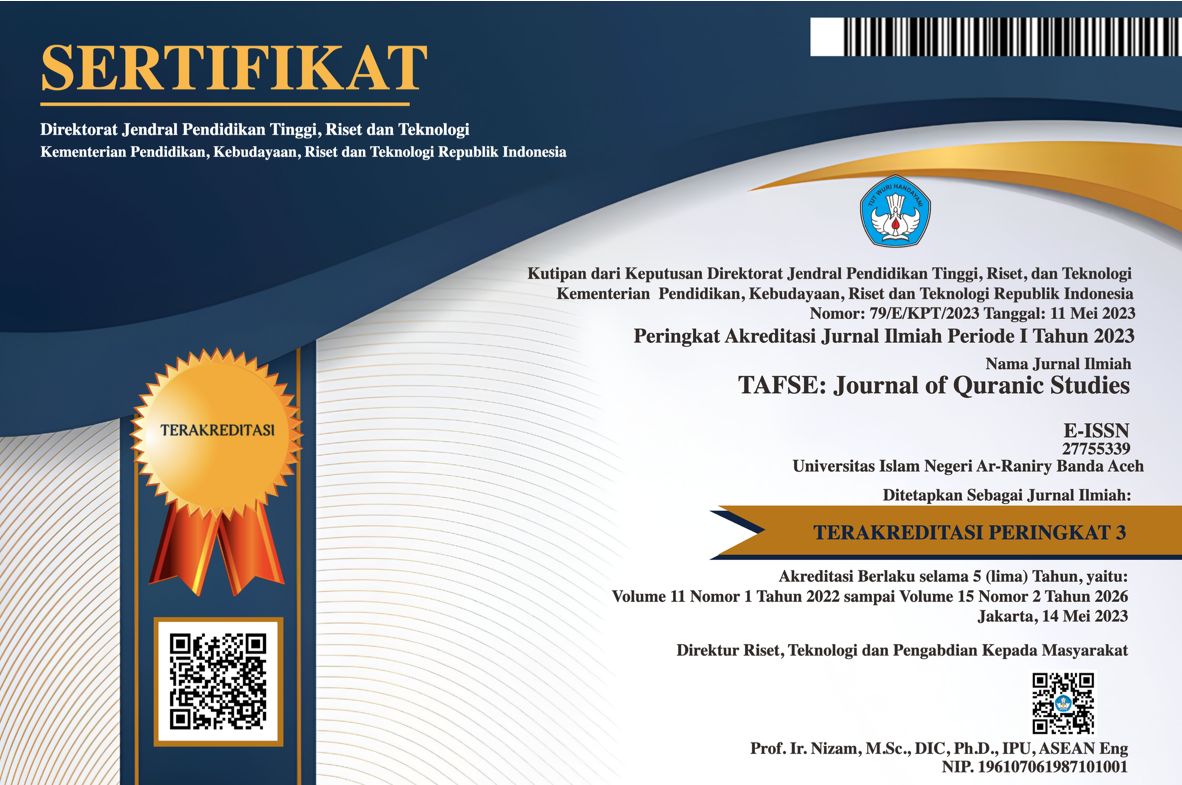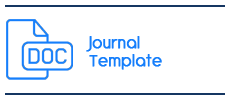Hubungan Antar Agama menurut Al-Quran dan Hadis
DOI:
https://doi.org/10.22373/tafse.v2i2.13607Keywords:
Toleransi, Persaudaraan, IslamophobiaAbstract
Sensitive issues that occur today are the relationship between religions that are not harmonious, the birth of Islamophobia among non-Muslims has given birth to a negative stigma against Islam, this is due to their misunderstanding of the teachings of Islam. This condition has resulted in disharmony in the social life of the community and even the emergence of hostility. This paper seeks to clarify the misunderstanding of non-Muslims toward Islam by explaining the concept of tolerance in the Qur'an and the Sunnah of the Prophet. The results of the study show that in terms of humanity, Islam is very tolerant and upholds human values, while in matters of religious belief, Islam provides limits so that it does not fall into shirk because it is a big sin that is not forgiven by Allah swt.
Isu sensitif yang terjadi saat ini adalah hubungan antar agama yang tidak harmonis, lahirnya islamophopia di kalangan non muslim telah melahirkan stigma negatif terhadap Islam, hal diakibatkan kesalah pahaman mereka terhadap ajaran Islam. kondisi ini telah mengakibatkan terjadinya disharmonis dalam kehidupan sosial masyarakat bahkan munculnya permusuhan. Tulisan ini berupaya memperjelas kesalah pahaman kalangan non muslim terhadap Islam dengan menjelaskan konsep toleransi dalam Alquran dan Sunnah Rasul. Hasil penelitian menunjukkan bahwa dalam hal kemanusian, Islam sangat toleran dan menjunjung tinggi nilai-nilai kemanusian, sedangkan dalam persoalan keyakinan beragama, Islam memberi batasan agar agar tudak terjerumus dalam kesyirikan, karena hal itu merupakan dosa besar yang tidak diampunkan oleh Allah swt.
Downloads
References
Ahmad bin Ali bin Hajar al-Asyqalani. Fathu al-Bārī Syarh Șahīh al-Bukhārī, Vol. 1. Beirut: Dar Al-Ma'rifah, 1379 H.
Atabik Ali Ahmad Zuhdi Mudlor. Kamus Kontemporel Arab Indonesia. Jakarta: Multi Karya Grafika, 2002.
M. Quraish Shihab. Ensiklopedia Alquran: Kajian Kosakata. Jakarta: Lentera Hati, 2007.
____________. Tafsir al-Misbah, Pesan, Kesan dan Keserasian Alquran, Vol. 14. Jakarta: Lentera Hati, 2002.
Makarim Mahmud al-Diri. al-Adab al-Jāhilī. Cairo: Jamiat Al-Azhar, 1999.
Muammar bin Isa al-Tirmiẓy. al-Jami’ al-Kabīr, Cet. 2, Jilid 3. Beirut: Dar al-Garb al-Islami, 1998.
Muhammad Nashiruddin al-Albani. Silsilah Hadis Ṣahīh, Terj. M. Qudirun Nur, Jilid 1. Jakarta: Qitshi press, 2005.
Muhammad bin Futuh al-Hamidi. al-Jam'u Bayna al-Șahīhain al-Bukhārī wa Muslim, Juz 3. Beirut: Dar Ibn Hazm, 2002.
Muḥammad Bin Ḥusain Bin Ali Bin Mūsā Abu Bakr al-Baihaqī. Sunan al-Baihaqī al-Kubrā, Juz 10. Mekkah: Maktabah Dār al-Bāz, 1994.
Muhammad bin Ismā’īl al-Bukhārī. Ṣahīh al-Bukhārī, Juz 4. Kairo:al-Matba’ah al-Salafiyah, 1400 H.
____________. al-Jāmi' al-șāhīh al-Mukhtașar, Vol. 1. Beirut: Dar Ibn Katsir, 1987.
Muhammad Nashiruddin al-Albani. Shahih Sunan Abu Daud seleksi Hadis Shahih dari kitab Sunan Abu Daud, Terj. Tajuddin Arief, Jilid 1. Jakarta: Pustaka Azzam, 2007.
Said Agil Husin Al Munawar. Fikih hubungan Antar Agama. Jakarta:Ciputat Press, 2005.
Shaleh H.A.A. Dahlan Dkk. Asbabun Nuzul: Latar Belakang Historis Turunya Ayat Alquran. Bandung: CV. Penerbit Diponegoro, 2000.
Downloads
Published
Issue
Section
License
Authors who publish with this journal agree to the following terms:
- Authors retain copyright and grant the journal right of first publication with the work simultaneously licensed under a Creative Commons Attribution License (CC BY NC 4.0) that allows others to share the work with an acknowledgment of the work's authorship and initial publication in this journal.
- Authors are able to enter into separate, additional contractual arrangements for the non-exclusive distribution of the journal's published version of the work (e.g., post it to an institutional repository or publish it in a book), with an acknowledgment of its initial publication in this journal.
- Authors are permitted and encouraged to post their work online (e.g., in institutional repositories or on their website) prior to and during the submission process, as it can lead to productive exchanges, as well as earlier and greater citation of published work (See The Effect of Open Access).





